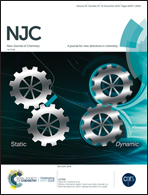Tuning surface conductivity and stability for high-performance Li- and Mn-rich cathode materials
Abstract
Li- and Mn-rich (LMR) layered materials with large specific capacities are one of the most promising cathodes for high-energy Li-ion batteries. However, the oxygen redox reaction induced by the activation of the Li2MnO3 component leads to lattice oxygen release and transition metal migration from the surface, which result in a large irreversible capacity loss, poor rate capability and inferior cycle stability compared with other cathodes. In this study, an integrated surface modification of combining a coating and chemical treatment is proposed to achieve modified LMR cathode materials with graphene wrapping layers and surface spinel phases. The graphene layer promotes electron transfer, and the spinel phase interlayer accelerates Li+ diffusion. Simultaneously, the combination of the two components increases the structural stability of LMR materials. As a result, the surface-modified LMR cathode exhibits a high rate capability of 154.3 mA h g−1 at 5C and an excellent cycle stability with a capacity retention of 84.2% after 200 cycles at 1C. In addition, the structural evolution of the surface-modified LMR cathode material was studied by in situ synchrotron X-ray diffraction analysis during the charge–discharge process, which illustrates that the surface modification has a significant effect on mitigating oxygen release by enhancing the surface structural stability.



 Please wait while we load your content...
Please wait while we load your content...